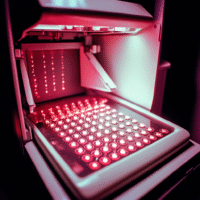Understanding the Trial Results
This study looked at how well a combination of two treatments—wearable electrical nerve stimulation (TENS) and transcranial direct current stimulation (tDCS)—works for people aged 60-70 with mild knee osteoarthritis (KOA). The goal was to see if this combination could help reduce pain and improve walking ability.
What Worked?
- The combination of TENS and tDCS was more effective than TENS alone in reducing pain and improving walking ability.
- Patients reported less pain and better walking performance during the treatment period and for up to a month after stopping the treatment.
What Didn’t Work?
- After two months, the benefits of the treatment were not significantly different from the control group, which suggests that the effects may not last long-term without continued treatment.
How Does This Help Patients or Clinics?
- Patients with mild KOA may find relief from pain and improved mobility through this combined treatment.
- Clinics can offer this new treatment option to help manage knee pain in older patients.
Real-World Opportunities
- Hospitals can implement this combined treatment in their pain management programs.
- Doctors can educate patients about this effective option for managing mild knee osteoarthritis.
Measurable Outcomes
- Clinics should track pain levels using the Brief Pain Inventory (BPI) and Visual Analog Scale (VAS).
- Monitor walking ability through tests like the 6-minute walking test (6MWT) and assess knee range of motion and strength.
AI Tools
- Consider using AI tools for patient monitoring and data analysis to track treatment effectiveness and patient progress.
Step-by-Step Plan for Clinics
- Start by training staff on how to use TENS and tDCS devices.
- Begin with a small group of patients to test the combined treatment.
- Collect data on patient outcomes regularly to evaluate effectiveness.
- Gradually expand the program based on initial results and patient feedback.
For more details, you can read the full research study here.

























